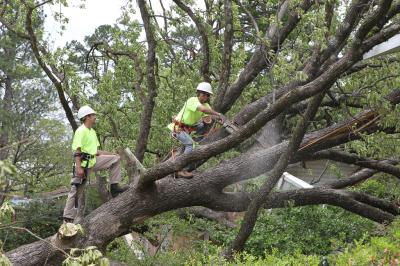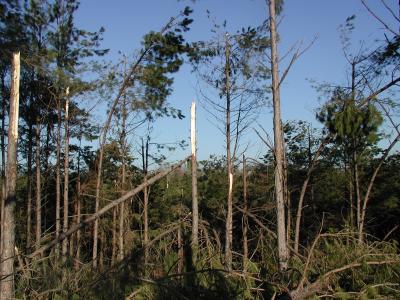How to Recover From Tree Damage After a Storm
Arkansans deal with major storms several times per year in every season. Once power is restored after a storm and clean up initiated, land and homeowners can begin to assess damage to their trees.
Should you pay for immediate tree cleanup?
There is no need for landowners and homeowners to pay a premium for services in the first few weeks after the storm. In the case of landscape trees, cleanup and tree trimming doesn't have to be done immediately unless life or property are threatened.
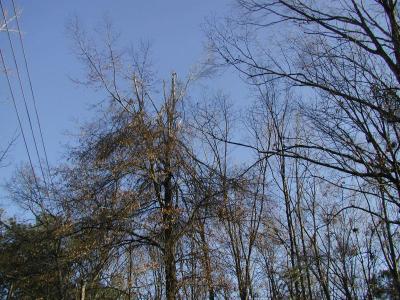
Storm damage to landscape trees can range from major to minor.
Major vs. minor tree damage
While minor injuries seldom result in permanent damage to the tree, severe injuries can increase a tree's susceptibility to insect and disease attack ultimately killing the tree. Damage to landscape trees should therefore be properly treated and repaired to maintain the health of the tree. You as a homeowner can treat some types of damage.
When to involve a tree specialist
Other more serious damage should be treated by a tree specialist. A tree specialist should treat other more serious damage especially if extensive bracing, cabling or removal of large branches is required. As always, never try to remove branches or trees from utility lines. Let the professionals do it. As with all things, there is a right and a wrong way to repair storm‑damaged trees.
The following categories of storm-damaged trees will survive for now and can wait to be harvested later when emergency salvage operations are over.
- Trees with broken tops, which still have four or more live limbs remaining
- Trees leaning less than 45°
- Windblown trees with roots still in the ground
What should I look for in a tree specialist?
Major repair will undoubtedly require the use of a chain saw and climbing equipment. Unless you are experienced in the use of such equipment and comfortable working off the ground, it may be best to have the work performed by a competent professional. The names of qualified firms can be obtained from local nursery workers. Also, look for listings of professionals under "Tree Service" in when searching. Make sure that they carry proper liability and workman's compensation insurance before allowing them to begin work on the job.
To protect your self and your property it's okay to ask for references or qualifications. You might want to hold on to your money until it has been completely earned by the person you have hired to do a job. Even under critical emergency conditions, complete, good quality repairs and tree removal must be done or more damage and deterioration can appear in the future.
Hazard tree inspections offer the best protection against future storm damage. Systematic inspections and assessments allow you to find and correct defective trees. Sound trees can withstand stronger winds than defective trees, so during storms the likelihood of tree failure is reduced.
Find Certified Arborists in your areaInternational Society of Arboriculture
Storm damage can be rated based on the degree and type of damage.
| Photo | Damage | Rating | Recommendations |
|---|---|---|---|
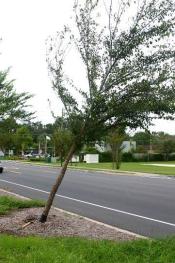 |
|
Minimal |
|
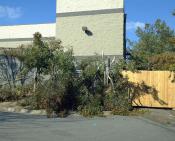 |
|
Minimal to Moderate |
|
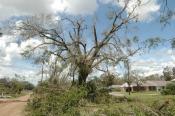 |
|
Severe |
|
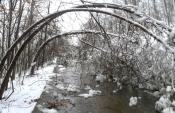 |
|
Severe |
|
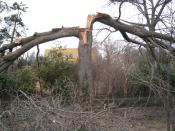 |
|
Catastrophic |
|
Many people panic after a storm and hire tree service companies to "top" their tree. Although a common practice, tree topping is not recommended by professional Arborists.
Topping a tree means removing most of the branches from a tree in a unfounded belief that such a measure will prevent ice or wind damage. All of the smaller branches are cut in the hope that the branches will therefore not fail. However, tree topping can create more problems rather than solving them.
| Tree Topped Following an Ice Storm | Same Tree 5 Years later |
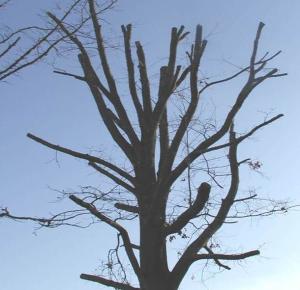 |
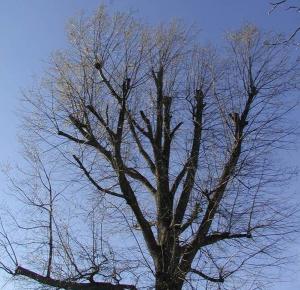 |
| This tree was severely topped although it had not suffered that much damage during the ice storm. Topping removes all of the buds that the tree had in place for growing the next season's leaves. The tree responds by growing many more new, smaller branches. | Five years later, the tree grew many more branches that are not well attached to the larger branches. These weaker attachments are now more prone to fail during the next wind or ice event. By topping the tree, the homeowner has created much more of a hazard than if they had pruned the tree properly. |
To learn more about tree topping, read the article by the Arkansas Urban Forestry Council![]() .
.
Contrary to popular belief, it is not necessary to treat trunk and limb wounds with tree paint. Research shows that painted areas can actually lead to increased rot and decay due to trapped moisture. Following the proper pruning practice of "natural target pruning" or three-step cutting is the key to treating storm-damaged trees.
Materials from fallen or salvaged trees can be used in several ways.
- Add smaller branches and twigs to the compost pile or cut up for kindling.
- Branches can also be converted into chips for use as compost, mulch or other landscaping
purposes if chipping equipment is available.
- In some areas, landfills or other waste disposal facilities are available to local
residents.
- Larger branches can be cut and used for firewood. Folks should keep in mind certain
safety considerations before firing up the wood stove or fireplace. Most of us are
not highly skilled with a chain saw. If you don't have the proper equipment or training,
then leave it to the professionals.
Care should also be exercised when burning wood scraps. Although wood scraps can be very good fuel for stoves or fireplaces, some wood is treated with chemicals that can be toxic when burned. Never burn wood scraps that have been treated with wood preservatives or inorganic salts; do not burn treated fence posts for the same reason.
Learn more about Salvaging Timber
Learn more about Chain Saw Safety
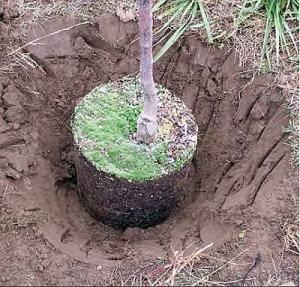 Select the right tree for the right place! It helps to know the approximate size
and shape of the tree when mature. This will help determine where to plant it to minimize
pruning because of interference with utility lines, branches rubbing against the house
or other buildings, etc.
Select the right tree for the right place! It helps to know the approximate size
and shape of the tree when mature. This will help determine where to plant it to minimize
pruning because of interference with utility lines, branches rubbing against the house
or other buildings, etc.
A few tree species including Chinese elm, silver maple, sycamore, boxelder, Bradford Pear, and various poplars have brittle wood, which is easily broken. These rapid‑growing trees are particularly susceptible to storm damage. Homeowners should be aware of these characteristics and avoid planting such species close to buildings, utility lines, etc. where potential damage could occur. If such trees are already growing in these locations, some preventive practices, such as pruning and bracing, or cabling, may help reduce the potential of storm damage. This is particularly true as the tree grows in size and the weight and surface of the leaf and branch area increases.
Finally, consider characteristics of the tree other than the provision of shade, such as presence of spring flowers, attractiveness to birds, fall color and winter appearance. Through careful selection, it is possible to obtain species that will contribute to the overall landscape in more than just one way.
Learn more about Planting Landscape Trees
Planting a Tree or Shrub (FSA6128)
Forest landowners should evaluate whether or not a salvage harvest is necessary before accepting a salvage price for their timber or making a hasty decision to harvest all of their forest stand.
One of the problems in salvaging timber immediately following a natural disaster of any type is that prices fall sharply as the material comes on the market. These prices can stay depressed for several months.
The following categories of ice-damaged trees will survive for now and can wait to be harvested later when the emergency salvage operations are over and timber prices back to normal:
- Trees with broken tops which still have four or more living limbs remaining
- Tree leaning less than 45°
- Windblown trees with roots still in the ground
Young trees which are bent will often straighten by themselves.
Research in the Southeast shows that Loblolly pine trees bent less than 40° from vertical can recover within two years. Trees bent 40° - 60° recovered but demonstrated varying amounts of crook and sweep. Only trees bent more than 60° did not recover enough to make acceptable growing stock. Research in Arkansas also supports these findings.
If you decide to conduct a salvage harvest, take care during the salvage operations.
Do not bang up or damage any standing, live trees because wounds of this type are ideal for invasion by decay‑causing fungi. In the case of pines, wounded trees become and remain very attractive to the summer's and next year's bark beetles. Wounded pines could be the center of a bark beetle buildup next year, so it would be prudent to avoid damaging pine stems at any time of year.
When only a few trees per acre are damaged, it may not be worth saving them considering the low prices normally paid for salvaged trees. Salvage prices are often lower not only because of the crisis situation with so many trees being salvaged but also because ice or wind-damaged trees may have hidden internal damage, such as ring shake, that make them useless for lumber.
Landowners can wait until the following growing season before they harvest to provide the bent trees some time to recover.
Hardwood stands can also suffer damage from ice storms. Most mature hardwood trees with 25% - 75% crown damage will survive, but the growth rate may be reduced. Trees with greater than 75% crown damage will not survive, except for ash, willow, basswood, and poplar. Although a tree is severely damaged, it might take several years for that tree to decline and die.
Wait until the end of the first growing season after the storm to decide which trees to harvest.
Some trees might recover during this time. Landowners interested in managing their hardwood stands for wildlife might consider leaving some damaged or deteriorating trees to provide snags and cavity trees for wildlife.
In immature and planted hardwood stands, trees bent more than 60° are not likely to straighten and can be cut down. However, allow bent trees until mid-summer to recover before taking action. Broken trees and bent trees can be cut to the ground before they get their leaves in the spring to encourage sprouting from the stumps.
It will take a few years before you will be able to determine the extent of the damage caused by a major ice storm. During this time, keep a close eye on the forest. Many different stresses, such as attacks from insects or diseases, can combine to cause serious damage.
For more help, landowners can call on their local County Extension Office, Arkansas Department of Agriculture - Forestry Division, Arkansas Forestry Association, area forest consultants, and other forest management professionals for advice.
Publications
| Source | Title |
|---|---|
| FSA1009 | Chain Saw Safety |
| FSA5012 | Evaluating the Potential of Upland Hardwood Stands |
| FSA5014 | What Should I Know About Selling My Timber? |
| FSA5017 | Landowner's Guide to Determining Weight and Value of Standing Pine Trees |
| FSA5020 | Income Tax Deduction for Storm-Damaged Timber |
| FSA5024 | Forestry Contracts |
| MP167 | Pruning Ornamental Plants |
| Hazard Tree Information USDA Forest Service |
Additional Storm Damage Resources
| Source | Title |
|---|---|
| Tree Decay: An Expanded Concept USDA Forest Service - Northeastern Area |
|
| Storm Damage Prevention and Treatment University of Florida | Institute of Food and Agricultural Sciences |
|
| How to Evaluate and Manage Storm-Damaged Forest Areas University of Georgia | Forest Pests - Bugwood Network | Center for Invasive Species and Ecosystem Health |
